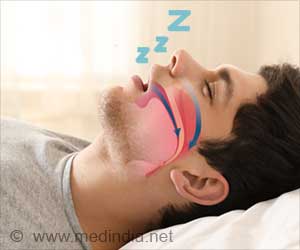Scientists suggest that it is the ability of the brain to predict what will happen in a very near future that enables people to make timely movements of their limbs.
Scientists suggest that it is the ability of the brain to predict what will happen in a very near future that enables people to make timely movements of their limbs.
Richard A. Andersen of the California Institute of Technology (Caltech) says that the neurons and neural connections that make up the sensory systems are far too slow to react to a happening in real time."Everything we sense is a little bit in the past," he said.
"The brain is generating its own version of the world, a 'forward model', which allows you to know where you actually are in real time. It takes the delays out of the system," he added.
While working with Grant Mulliken of MIT and Sam Musallam of McGill University on a study, he focused on understanding the neurobiological underpinnings of brain process-such as the senses of sight, hearing, balance, and touch, and the neural mechanisms of action.
His lab is working toward the development of implanted neural prosthetic devices that would serve as an interface between severely paralysed individuals' brain signals and their artificial limbs, allowing thoughts to control movement.
Andersen's group focuses on a more high-level area of cortex called the posterior parietal cortex (PPC), which is where sensory stimuli are actually transformed into movement plans.
Advertisement
The monkeys typically generated curved trajectories, but to increase the curvature one monkey was trained to move the cursor around an obstacle, a large blue circle which was placed between the initial location of the cursor and the target circle.
Advertisement
The researchers used electrodes to measure the activity of neurons in the monkey's PPC as they conducted the tasks, which allowed them to monitor signals-commands for movement-in real time.
According to the research group, it was found that neurons in the PPC produce signals that represent the brain's estimation of the current and upcoming movement of the cursor.
"An internal estimate of the current state of the cursor can be used immediately by the brain to rapidly correct a movement, avoiding having to rely entirely on late-arriving sensory information, which can result in slow and unstable control," said Mulliken.
Andersen said: "The idea is that you feed back the command you make for movement into those areas of the brain that plan the movement (i.e., the PPC). The signal about the movement taking place is adjusted to be perfectly aligned in time with the actual movement--what you're moving in your head matches with what you're moving in the real world."
In their study report, the researchers said that the effect was akin to an athlete visualizing his performance in his mind.
A study recently showed that monkeys could feed themselves using a robotic limb that they controlled only with their thoughts, which were picked up via an array of electrodes sitting on top of the primary motor cortex.
The neural signal driving the robotic limb was what is known as a "trajectory signal", which represents the path that must be taken to move from one point to another, like using a computer mouse to drag an object across a screen.
Andersen says that a different signal in the posterior parietal cortex, called the "goal signal", can also be used to directly jump an object from one point to another.
"This goal signal is much faster for reaching a goal than a trajectory signal. Fast goal decoding is very advantageous for rapid sequences such as typing. Our new study shows that the posterior parietal cortex codes the trajectory as well as the goal, which makes this brain area an attractive target for neural prosthesis. Not only does this increase the versatility and the number of prosthetic applications, but it also makes the decoding easier since the trajectories can be better estimated if the goal is known," he says.
A research article on this work is currently available online, and will be published in a future print issue of the Proceedings of the National Academy of Sciences.
Source-ANI
SPH










